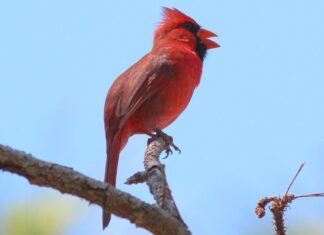Australia is grappling with a burgeoning pollination crisis, fueled by insufficient knowledge about the insects vital to plant reproduction. This lack of information creates a serious problem: researchers often don’t know which pollinators support critically endangered plants, hindering effective conservation efforts.
Adding to this challenge, the diversity of Australia’s native bee population remains largely uncharted. Many regions remain unsampled, and countless species are yet to be officially described by scientists. This hidden biodiversity underscores the urgency of ongoing research.
A new discovery shines a spotlight on these interconnected issues: researchers have identified a previously unknown species of Megachile bee in Western Australia. Interestingly, this unique bee was found visiting both the critically endangered Marianthus aquilonaris wildflower and nearby mallee trees – a critical finding that highlights its potential role in pollination for multiple plant species within its limited habitat range.
“I stumbled upon it while surveying the rare Marianthus aquilonaris,” explains Dr. Kit Prendergast, a researcher at both the University of Southern Queensland and Curtin University. “The bee visited both this endangered wildflower and a nearby mallee tree.” Further analysis through DNA barcoding confirmed that male and female specimens belonged to the same previously unknown species. Neither matched any existing bee records in scientific databases nor aligned with museum collections based on physical characteristics.
This new Megachile bee is significant not only for its unique morphology – females have striking “horns” – but also because it represents the first new addition to this bee group identified in over two decades. This discovery underlines that even seemingly well-studied areas like Western Australia harbor undiscovered life, emphasizing that biodiversity loss may be occurring faster than we can track it.
The finding is particularly timely given that the bee’s small habitat range overlaps with the critically endangered Marianthus aquilonaris. Both species face potential threats from habitat destruction due to activities like mining and climate change.
Dr. Prendergast stresses, “Because these two species exist in such a small area, they are both vulnerable to habitat disturbance and other threats like climate change.” She adds a stark warning: “Many mining companies don’t routinely survey for native bees, so we may be unknowingly missing undiscovered species that play crucial roles in supporting threatened plants and ecosystems.”
The discovery of this unique bee underscores a clear point: before these vital habitats are irrevocably altered, we urgently need to identify and understand the complex web of life within them. Without comprehensive knowledge about our native bees and their ecological roles, researchers risk losing both pollinators and the plants they support before truly understanding their significance.












































